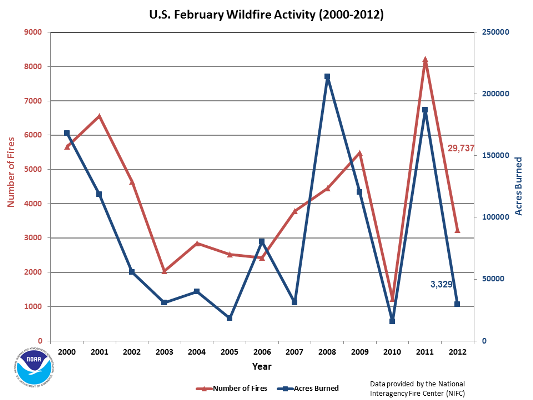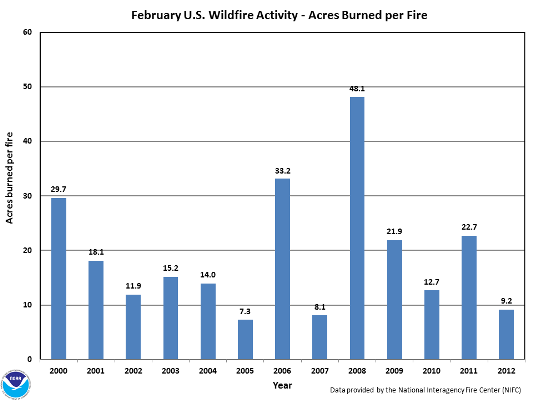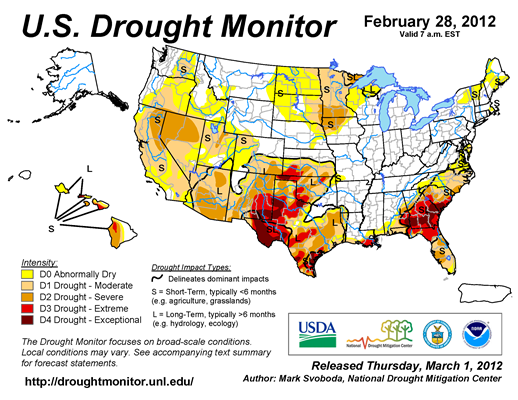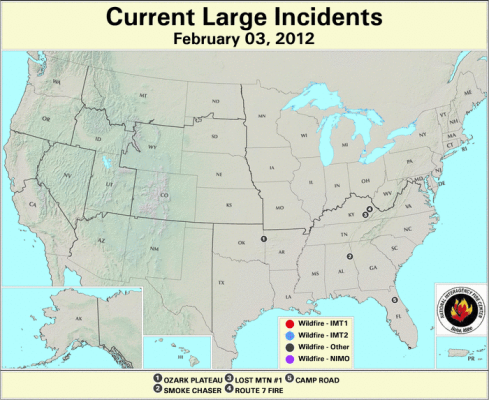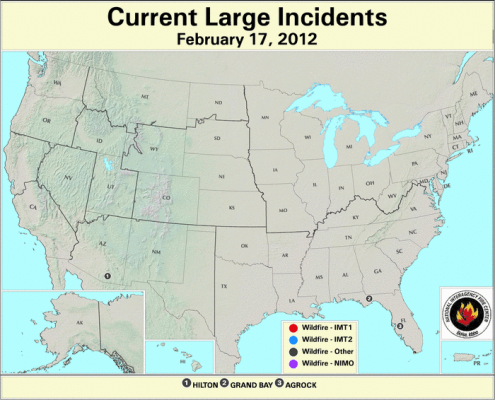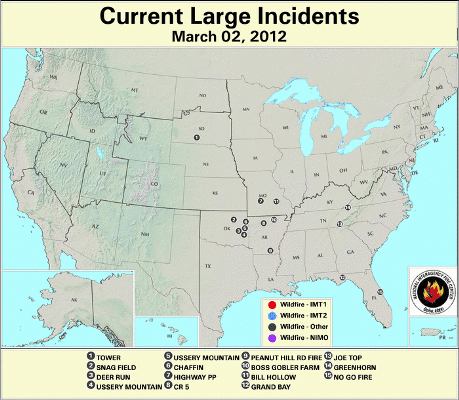Updated: 7 March 2012
Overview
February is not considered to be part of the U.S. wildfire season, with fire activity typically being slow during the month. February 2012 was below average in terms of the number of fires and acreage burned, with 3,329 fires burning approximately 29,737 acres.
According to the National Interagency Fire Center (NIFC) :
For more wildfire statistics visit U.S. Wildfires.
Discussion
As a whole, the U.S. was warmer than average during February, with the warmest temperature anomalies across the central and eastern regions of the country. January was also particularly dry across the western and eastern U.S. with wetter than average conditions in the middle of the country, from Louisiana to Minnesota, and westward to the Rockies. For more information, please see the monthly temperature and precipitation discussion. According to the U.S. Drought Monitor, during February, the over size of the drought (D1-D4) footprint changed little from 37.87 percent of the contiguous U.S. at the end of January to 38.66 percent at the end of February. Drought conditions worsened across parts of the Southeast, where Exceptional Drought (D4) covered most of southern Georgia, stretching into parts of Alabama and South Carolina. Moderate Drought (D1) expanded northward to cover more of the Carolina Piedmont. Drought also worsened for parts of the interior West, with Severe Drought (D2) developing across the Great Basin. Drought continued to improve for much of the Southern Plains, especially Texas, where beneficial precipitation improved drought conditions by one category across the eastern half of the state.
Wildfire information and environmental conditions are provided by the National Interagency Fire Center (NIFC) and the U.S. Forest Service (USFS) Wildland Fire Assessment System (WFAS).
At the beginning of February, there were five large wildfires burning across the country. Two fires were active across eastern Kentucky, where drier-than-average conditions the past several months lowered 100-hour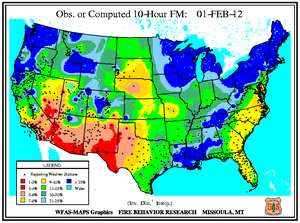 fuel moistures across the region. One large wildfire was burning in northern Florida, where dry conditions increased Keetch-Byram Drought Index (KBDI)
fuel moistures across the region. One large wildfire was burning in northern Florida, where dry conditions increased Keetch-Byram Drought Index (KBDI)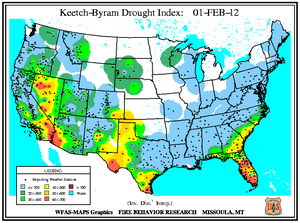 values and lowered 10-hour
values and lowered 10-hour fuel moistures. One additional fire was burning in eastern Oklahoma.
fuel moistures. One additional fire was burning in eastern Oklahoma.
During mid-February, there were three large wildfires active in the United States. Two large wildfires were burning across Florida, where low 10-hour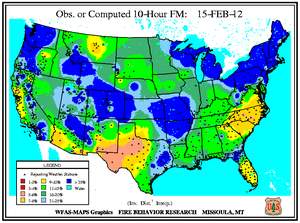 fuel moistures were observed as well as very high KBDI
fuel moistures were observed as well as very high KBDI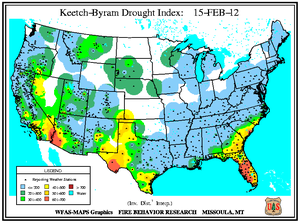 values. The other active fire was in southern Arizona, which had been suffering from on-going drought conditions. Fuel moistures of all sizes were extremely dry (low fuel moistures) and high KBDI
values. The other active fire was in southern Arizona, which had been suffering from on-going drought conditions. Fuel moistures of all sizes were extremely dry (low fuel moistures) and high KBDI values were observed in the region.
values were observed in the region.
At the end of the month, there were 15 large wildfires active across the country. Ten of the wildfires were active across eastern Oklahoma, Missouri, and Arkansas where moderately low 10-hour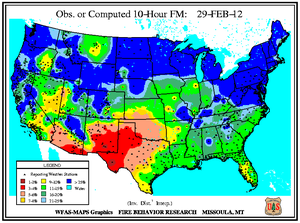 and 100-hour
and 100-hour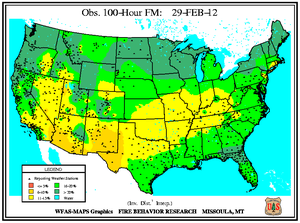 fuel moistures and high fire danger
fuel moistures and high fire danger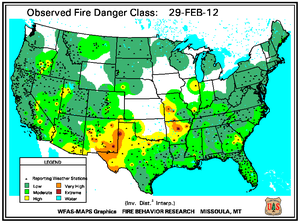 were observed. Two fires were burning across eastern Tennessee, where windy and dry conditions the last few days of the month created ideal wildfire conditions. Two fires were burning across Florida, which has been particularly dry for the past several months, lowering fuel moistures and increasing the KBDI
were observed. Two fires were burning across eastern Tennessee, where windy and dry conditions the last few days of the month created ideal wildfire conditions. Two fires were burning across Florida, which has been particularly dry for the past several months, lowering fuel moistures and increasing the KBDI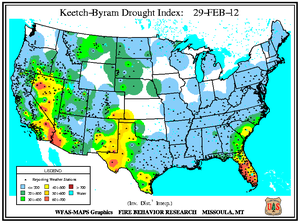 values across the state. One additional large wildfire was burning in South Dakota.
values across the state. One additional large wildfire was burning in South Dakota.
 NOAA's National Centers for Environmental Information
NOAA's National Centers for Environmental Information
